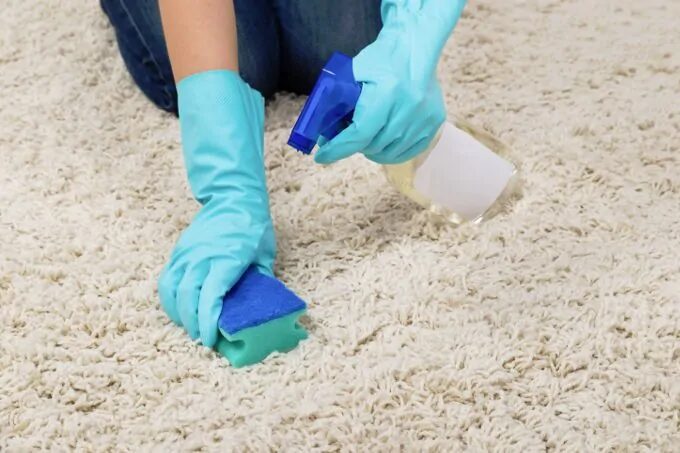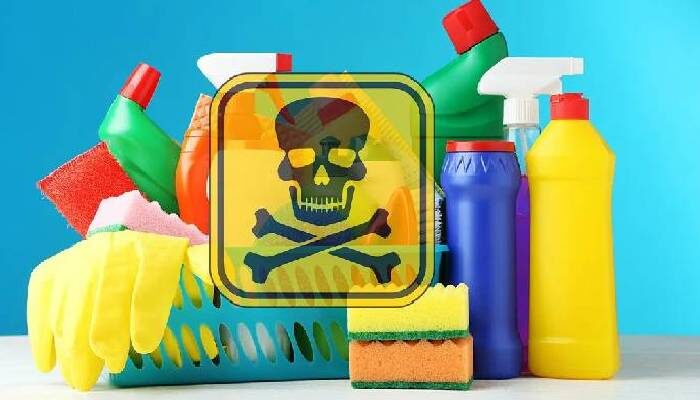We’ve all been there – you spend a valiant Saturday scrubbing floors, wiping counters, and vanquishing dust bunnies, only to feel like your home is perpetually teetering on the edge of grime-ville. Frustrating, right? But before you resign yourself to a life of perpetual tidying, consider this: some of your cleaning habits might actually be making things worse! Let’s delve into the world of counterproductive cleaning and unearth the hidden culprits behind your home’s lingering mess.

Cleaning Blunders: Unveiling the Culprits
1. The Multitasking Martyr:
Ever try cleaning the kitchen while simultaneously checking emails and fielding phone calls? It might feel productive, but multitasking while it often leads to shortcuts and missed spots. Focus on one task at a time for a more thorough clean.
2. The Sponge on a Throne:
Think your trusty kitchen sponge is a germ-fighting champion? Think again. Sponges are breeding grounds for bacteria, and reusing them can simply spread germs around your surfaces. Swap your sponge frequently, or consider using disposable cleaning cloths.
3. The Filthy Floor Fighter:
You might be surprised to learn that a dirty mop or vacuum cleaner is less friend and more foe. A clogged vacuum with a full bag isn’t effectively picking up dirt, and a grimy mop is just spreading grime around. Clean your mop heads regularly and empty your vacuum cleaner after each use.
4. The Dish Detergent Delusion:
Dish soap might be great for sudsing up your dishes, but it’s not a universal cleaner. Using dish soap on all surfaces can leave a filmy residue that attracts more dirt in the long run. Stick to specific cleaners designed for different surfaces.
5. The Windy Wonder (Mis)Used:
While fans can circulate air, they can also redistribute dust particles. Before switching on the fan, make sure you’ve dusted and vacuumed to avoid swirling settled dust back into the air.
6. The “Close Enough” Conundrum:
Wiping down surfaces with a quick swipe might seem efficient, but it often leaves behind streaks and missed grime. Use a clean, damp cloth and apply enough pressure to ensure a thorough clean.
7. The Over-Sprayer:
Drenching surfaces with cleaning products might seem more effective, but it can damage surfaces and leave behind streaks. Use the recommended amount of cleaner and a damp cloth for optimal results.
8. The Towel Trap:
Kitchen towels and dishcloths harbor bacteria if not cleaned properly. Wash them frequently in hot water, ideally with bleach, to prevent them from becoming breeding grounds for germs.
9. The “Later” List Lament:
Leaving spills and messes to “deal with later” is a recipe for disaster. Dried-on messes are harder to clean and can attract pests. Tackle spills and messes promptly for a less stressful clean-up later.
10. The “One Size Fits All” Fallacy:
Not all cleaning products are created equal. Using an all-purpose cleaner on every surface might be convenient, but it might not be the most effective approach. Invest in specific cleaners designed for different surfaces, like granite countertops or stainless steel appliances.

Conquering the Cleaning Conundrum: Effective Strategies
here are some tips to elevate your cleaning routine:
- Plan Your Attack: Create a cleaning schedule that tackles different areas of your home each day or week.
- Gather Your Arsenal: Invest in high-quality cleaning supplies and microfiber cloths for streak-free cleaning.
- Work from Top to Bottom: Dusting ceiling fans and shelves before mopping floors prevents settled dust from undoing your cleaning efforts.
- Embrace Fresh Air: Open windows for ventilation while cleaning to remove dust and cleaning product fumes.
- Declutter Regularly: Clutter creates more surfaces for dust and grime to accumulate. Declutter regularly to make cleaning easier and more manageable.
Conclusion:
By ditching these sneaky cleaning saboteurs and implementing effective strategies, you can transform your cleaning routine from a frustrating chore into a satisfying act of self-care for your home. Remember, a clean home is a happy home, and with a little awareness and these handy tips, you can create a sparkling sanctuary that truly reflects your efforts.
Read Also
- Building Resilience: Learning to Bounce Back from Challenges and Setbacks
- Unlocking Creativity: Exploring Techniques to Spark New Ideas and Approaches
- The Science of Learning: Exploring Effective Techniques for Knowledge Retention
- Developing a Growth Mindset: Embracing Challenges as Stepping Stones to Success
Frequently Asked Questions (FAQs)
1. What are some eco-friendly alternatives?
There are many effective cleaning solutions you can make at home using natural ingredients like vinegar, baking soda, and lemon juice. You can also find eco-friendly cleaning products at most grocery stores.
2. How often should I clean different areas of my home?
The cleaning frequency for different areas depends on how often you use them and your personal preferences. Here’s a general guideline:
- Daily: Kitchen counters, stovetops, sinks (after use), toilets (quick wipe-down)
- Weekly: Floors (vacuuming, mopping), bathrooms (deeper clean), dusting surfaces
- Monthly: Ovens, refrigerators (deep clean), blinds, ceiling fans
- Bi-annually: Wash carpets, upholstery, mattresses
3. I have pets. How can I keep my home clean with pet hair?
- Invest in a good quality vacuum cleaner with a pet hair attachment.
- Brush your pet regularly to remove loose fur.
- Use lint rollers on furniture to remove pet hair.
- Consider keeping pet-free zones in your home, like the couch or bed.
4. Cleaning feels overwhelming. How can I make it more manageable?
- Break down tasks into smaller, more manageable chunks.
- Put on some music or podcasts to make it more enjoyable.
- Enlist the help of family members to share the cleaning load.
- Reward yourself after completing a cleaning task to stay motivated.
5. Is it okay to hire a cleaning service?
Absolutely! Hiring a cleaning service can be a great way to free up your time and reduce stress. It allows you to focus on other priorities while ensuring your home stays clean.

